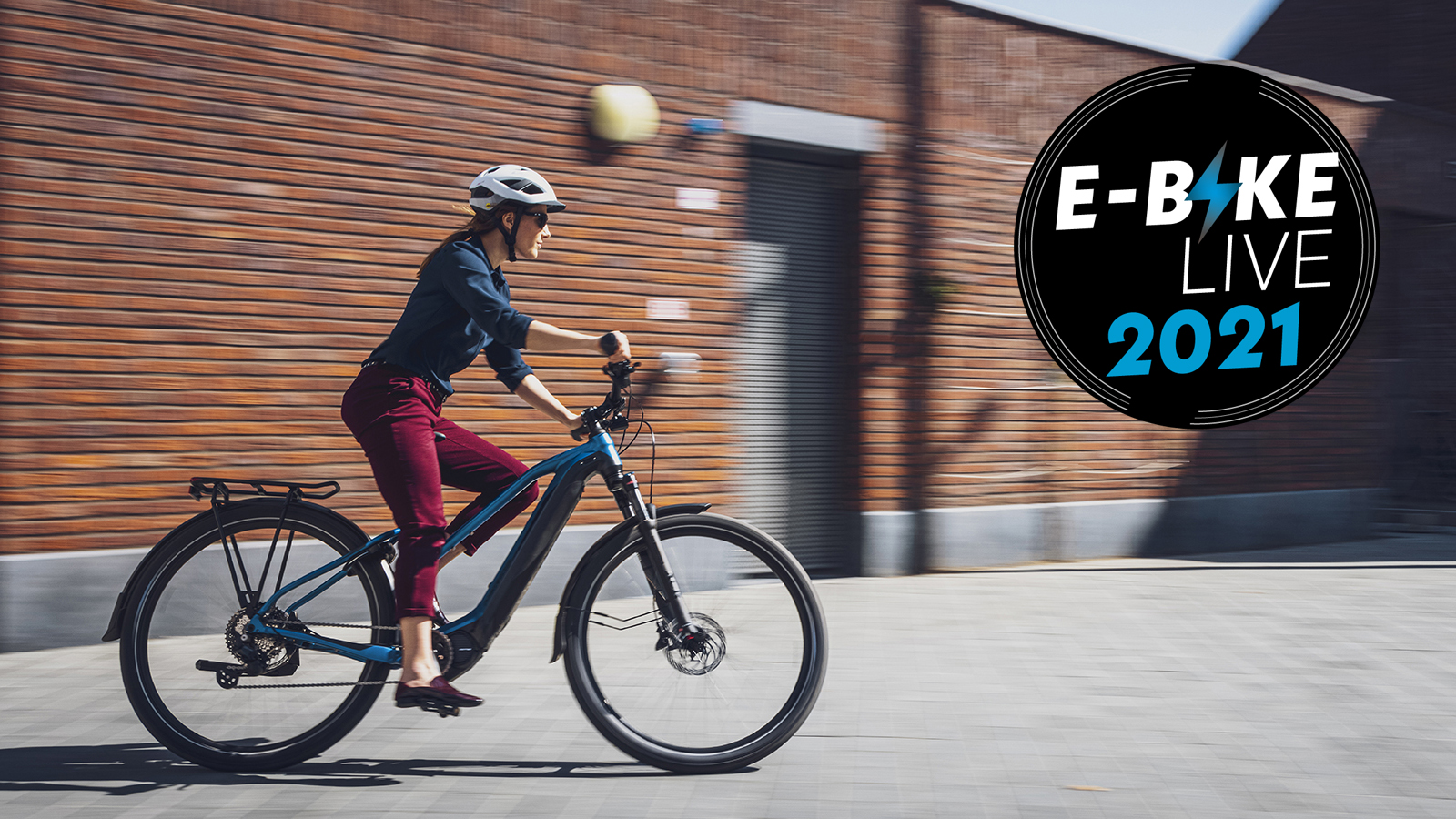Do you need insurance for an electric bike?
You might not be required to have insurance but we take a look at why you should get it anyway

Electric bikes are here to stay. For years they slowly gained steam in the background but never achieved popular adoption until all of a sudden, technology, urban planning and cultural acceptance came together. E-bike sales exploded. Right now, many popular models are so hot they are hard to get and there's no sign of the market slowing anytime soon. All this growth has brought a whole new group of riders into the fold.
Along with the growth of new riders, the cry for required bike insurance hasn't gone away. There's also, understandable, confusion about the requirements of insurance for electric bikes. The question of how electric bikes differ from their non-powered brethren, alongside whether they need insurance, is a big one.
- Best bike insurance: Our pick of the best policies for cyclists of all disciplines
- Electric bikes: everything you need to know
Do you need insurance for an electric bike?
The reality is that you do not need insurance for your electric bike. Or, perhaps more accurately stated, you are not legally required to carry insurance. In Europe as long as the assisted top speed is 25km/hr, the motor no bigger than 250 watts, and pedalling is required, then you've got a bike. Despite the calls for it over the years, bikes don't need insurance.
In the US things are a little more freewheeling. Electric bikes in the US fall under both federal and state definitions. The federal government handles the manufacturing and first sale. From there the operation falls under state jurisdiction. An easy way to think about it is that the primary definition of an electric bike gets handled federally while what you do with it is at the state level. That primary definition allows for motors up to 750 watts and those motors can be the sole power of the bike up to 20mph.
You will notice that the federal definition does not define a maximum speed when propelled by a combination of human and motor power. The key point so far is that if your electric bike stays under 20mph when using a throttle only, then it is a bike and does not require a license or insurance.
In terms of what the states define, it's a patchwork of 50 different sets of laws. A consensus has begun to emerge though. 26 states at this point use the three-tiered definition known as e-bike classes.
- E-bike classes: What are they and what do they mean?
For the purpose of understanding what defines electric bikes as bikes, and by extension the need for insurance, it's class III bikes that still need discussion. Class III bikes can travel faster than 20mph, as allowed in the federal law, but max out at 28mph. Speeds between 20mph and 28mph require the rider to be pedalling. There's also a required speedometer.
Get The Leadout Newsletter
The latest race content, interviews, features, reviews and expert buying guides, direct to your inbox!
You can see that even a very light overview of how to define an electric bike in the US takes considerable time. In most cases you really don't need to worry about it because reputable manufacturers have figured it out for you. Buy from a trusted name and you are going to be getting a legal-to-use electric bike. You may need to check local laws to figure out where you can ride it, but it won't need insurance. The key points are that it has a motor smaller than 750 watts, throttle only operation cuts out at 20mph, and no assistance over 28mph.
Why should you get insurance anyway?
Now you understand that in most instances you don't need to have insurance, let's talk about why you should anyway. When it comes to the reasons to add insurance, there are two main ways to look at it. First up, electric bikes are bikes, but they tend to be expensive bikes. You could start there and consider insurance through the lens of an expensive item you'd rather have protected.
The most obvious way this line of thinking plays out is that bikes are easily stolen. We have articles about the best bike GPS trackers and the best bike locks, but the fact remains your new electric bike might get stolen. Even if you never leave it anywhere it might go missing from your home. Garages aren't all that secure and bike theft out of a garage is common. Even if you keep it inside though, home robberies happen and it might go missing.
If that were to happen with a bike you'd look to rely on your home insurance. This is the part where it's a good idea to go check the wording of your policy. If you look at the electric bike as a bike, you need to check to see what the policy limits are for individual items, what your deductible (excess, in the UK) is, and whether bikes are defined separately. The first problem you may run into is deductible. If you've got a bike from our best electric bikes under $1,000 or best electric bikes under $2,000 guides, you might not have coverage. If your bike costs $1,000 and your deductible is $1,000 you are out of luck.
Even if the cost of your bike makes paying a deductible worth it, you might still not have coverage. Many insurance policies set a maximum coverage per item. $2,000 isn't unheard of and that would leave you underinsured for a lot of e-bikes.
There's one more piece of the puzzle though. Even if you've got all those bases covered there are some insurance policies that set specific coverage limits for high price items. Sometimes there's no per-item coverage unless it's a bike, or jewellery, or any number of other categories.
Oh, and just in case you've checked everything in that list of gotchas, it's not done yet. Even if your bike has coverage, is it valued on the purchase price or is it a depreciated value? The last thing you want to do in the event of theft is to haggle over how many miles are on your bike and what it costs to replace it. It all might be irrelevant though. We talked to Dave Williams, CEO & Co-Founder of Velosure Companies to get some additional insight into why you might want insurance.
The whole discussion above is all about how to make sure any bike you own has coverage under homeowner's or renter's insurance. Velosure is a bike-specific insurance company in the US and they are experts on all the reasons you need insurance for your electric bike. According to Williams, "Home insurance doesn't cover e-bikes because in home insurance policy wording, an electric bicycle falls under the definition of a motorised vehicle. Quite simply your home insurance doesn't cover your motorcycle or car because they are also motorised vehicles and require a separate motor vehicle insurance policy." So even if you've been diligent in making sure your bike has coverage your insurance company might not consider an electric bike a bike. That might be incorrect, but arguing the case against an insurance company after the fact is no fun.
What about my health insurance?
There is another reason to consider insurance on an electric bike beyond just property damage: in the US especially, it's medical costs. There are 13 states that require something called personal injury protection as part of an auto policy. Each of the states has different laws, but in some cases that might mean you have coverage through your auto policy when walking or riding a bike. If you don't live in one of those states or if you are at fault and don't have an auto policy, your medical insurance is going to be primary.
Consider for a moment what that means to have your medical insurance as primary coverage if you get injured on an e-bike. You could be travelling at 28mph when you hit a bump, lose control, and fall. You've got a head injury and a broken arm and an ambulance takes you to the hospital. You are going to be okay, but you are in for a serious financial hit. Ambulance and emergency room visits will likely surpass your out-of-pocket maximum. It's not at all unusual for US health insurance policies to have out-of-pocket maximum coverage of $7,500. That's a lot of money and your bike might also require replacement. Supplemental bike insurance can step in and help you with those out-of-pocket expenses.
Visit our guide to the best bike insurance to find the right policy for you, or head to Go Compare where you can compare prices.
Josh hails from the Pacific Northwest of the United States but would prefer riding through the desert than the rain. He will happily talk for hours about the minutiae of cycling tech but also has an understanding that most people just want things to work. He is a road cyclist at heart and doesn't care much if those roads are paved, dirt, or digital. Although he rarely races, if you ask him to ride from sunrise to sunset the answer will be yes. Height: 5'9" Weight: 140 lb. Rides: Salsa Warbird, Cannondale CAAD9, Enve Melee, Look 795 Blade RS, Priority Continuum Onyx

